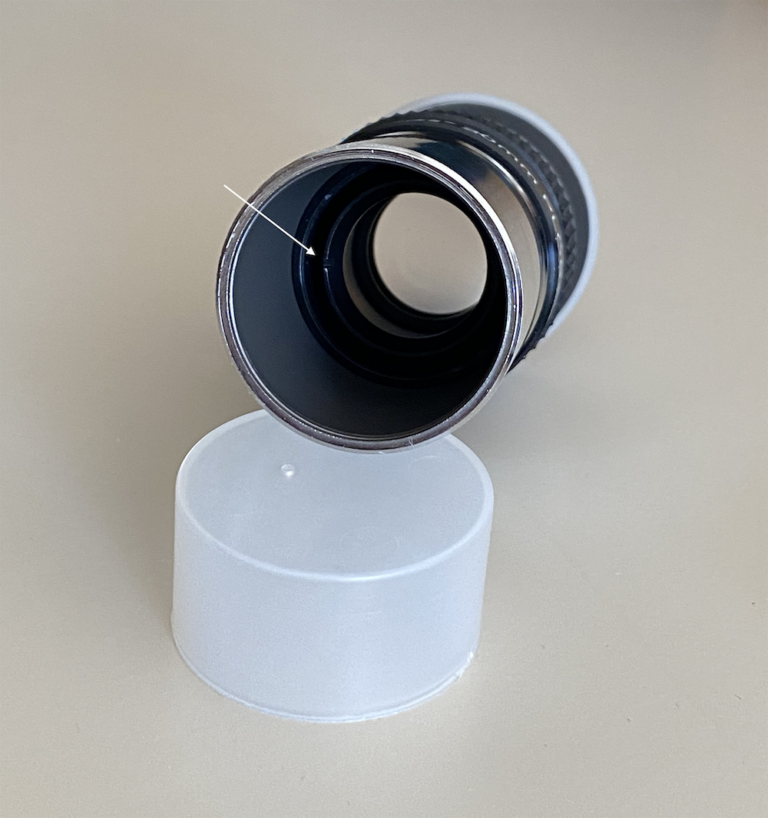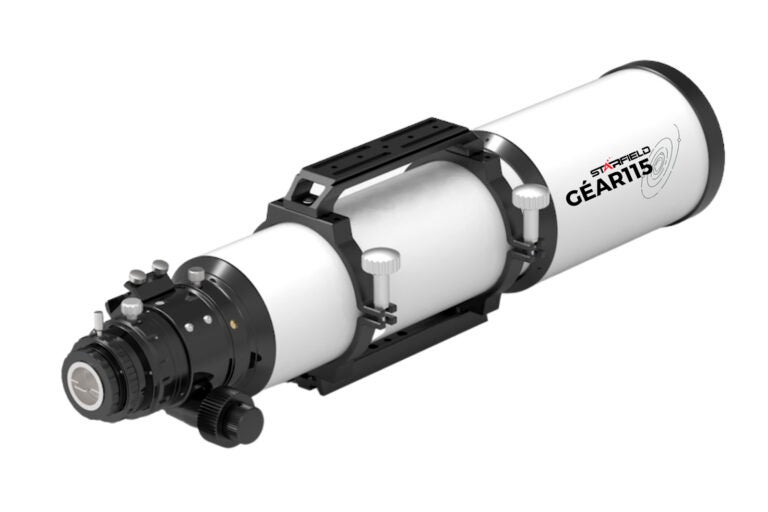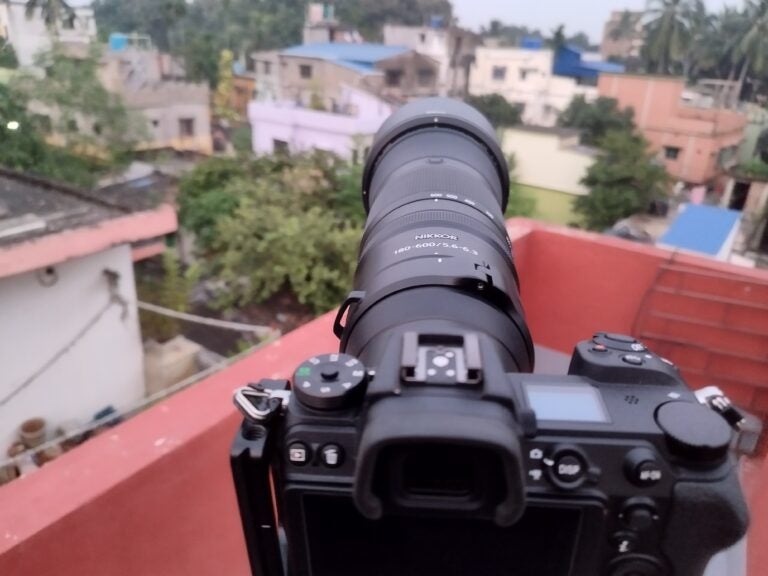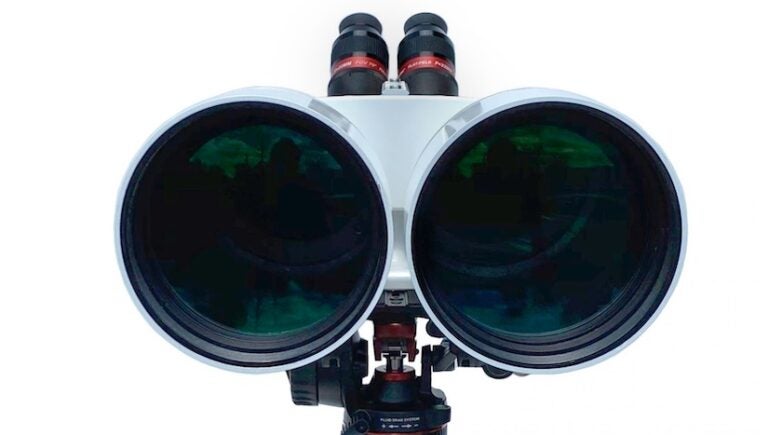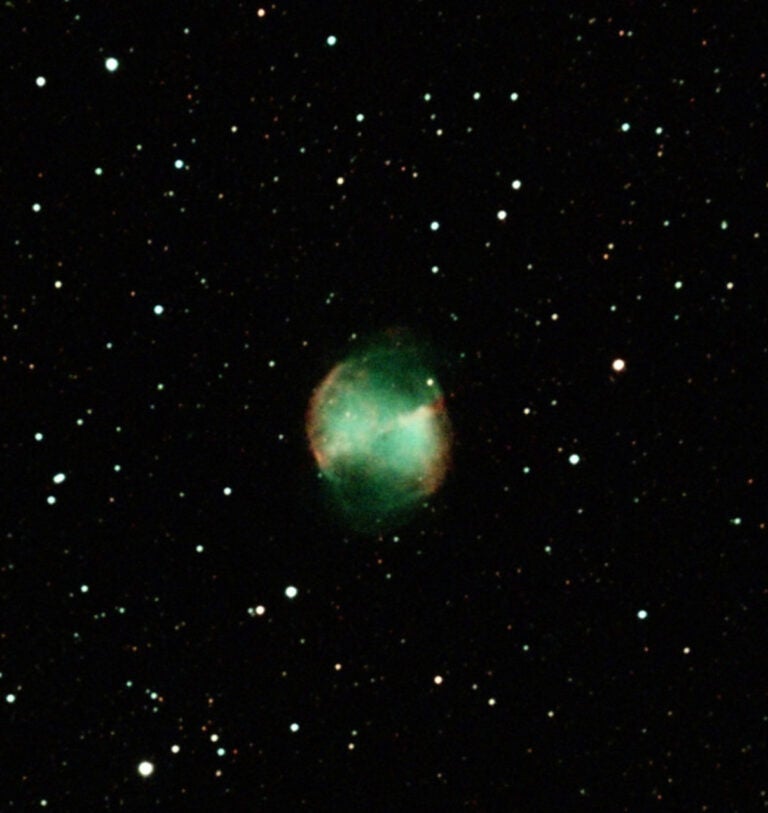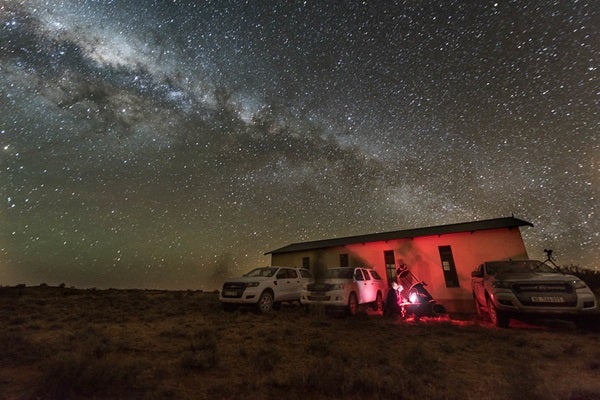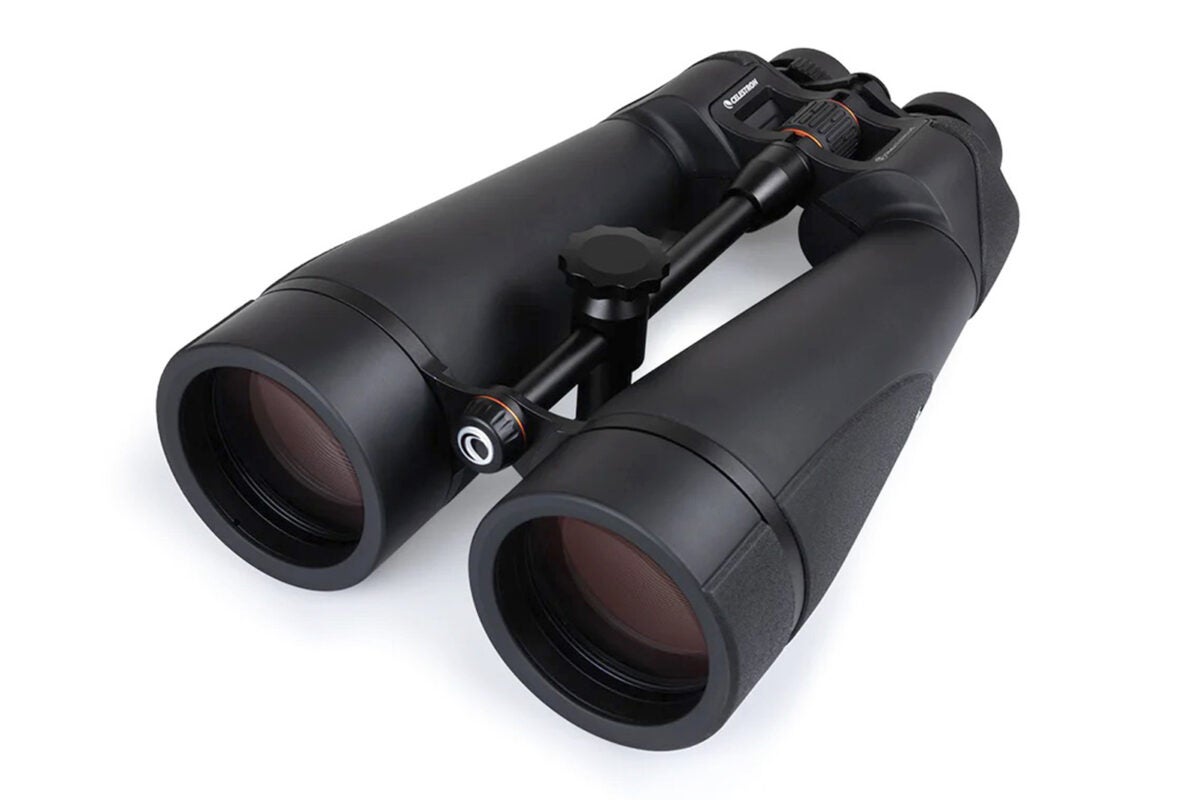
Astronomy Contributing Editor Phil Harrington loves binoculars. Indeed, his catchphrase is, “Two eyes are better than one.” He’s not wrong. Observing is naturally more relaxed when you can keep both eyes open. But low-power units with small apertures and questionable optics offer little to amateur astronomers. Luckily, there are also robust binoculars with top-notch glass.
Recently, Celestron of Torrance, California, introduced an upgrade to the Pro models in its line of SkyMaster Porro binoculars by equipping them with extra-low dispersion (ED) glass and larger prisms. The company produces three models with ED glass: the 7×50, 15×70, and 20×80 (where the first number is the magnification and the second is the length of the objective lens in millimeters). When I was given the choice as to which to review, needless to say, I picked the largest one.
The exterior: Less is more
Celestron packages the SkyMaster Pro ED 20x80mm Porro binoculars in a single box. Inside were the binoculars, a flexible nylon case, two pairs of lens caps (the larger one already attached to the binoculars), a neck strap, and a built-in tripod adapter attached to what the company calls a balance compensation rail. A large locking knob on the adapter lets you slide the binoculars forward or backward to get the perfect balance on your tripod. (The two smaller models in the Pro ED lineup do not include a tripod adapter, but any standard adapter for binoculars will do.)
Although the Pro ED binoculars come with a neck strap, I’m not sure any observer in worse shape than the average NFL player could hand-hold them for very long. Weighing in at 7.7 pounds (3.5 kilograms), with a length of 14 inches (35.6 cm) when the eyecups are fully extended, the 20x80mm unit is solidly built, to say the least. The body is armored with a sleek flat-black rubber, with the exception of a few hints of orange (Celestron’s signature color) and some small lettering in silver.
Because both eyes don’t focus the same for most humans, Celestron added a key feature where the right eyepiece has a diopter adjustment with a range of ±3 that compensates for that difference. In addition to getting a precise observing session, the focusing and eyecup movement are both smooth as silk.
Another feature that sets the Pro ED binoculars apart: The eyepieces accept 1¼-inch filters. However, the filters don’t screw into the bottom of the eyepieces, as with those for telescopes. Instead, the outside of each eyepiece is threaded to accept them. I’m fairly heavy-handed, so I always worry when I’m installing or removing a small, delicate eyepiece filter. These binoculars, however, I just set front-lenses-down on a flat surface and screwed the filters into the eyepieces.
It’s the inside that counts
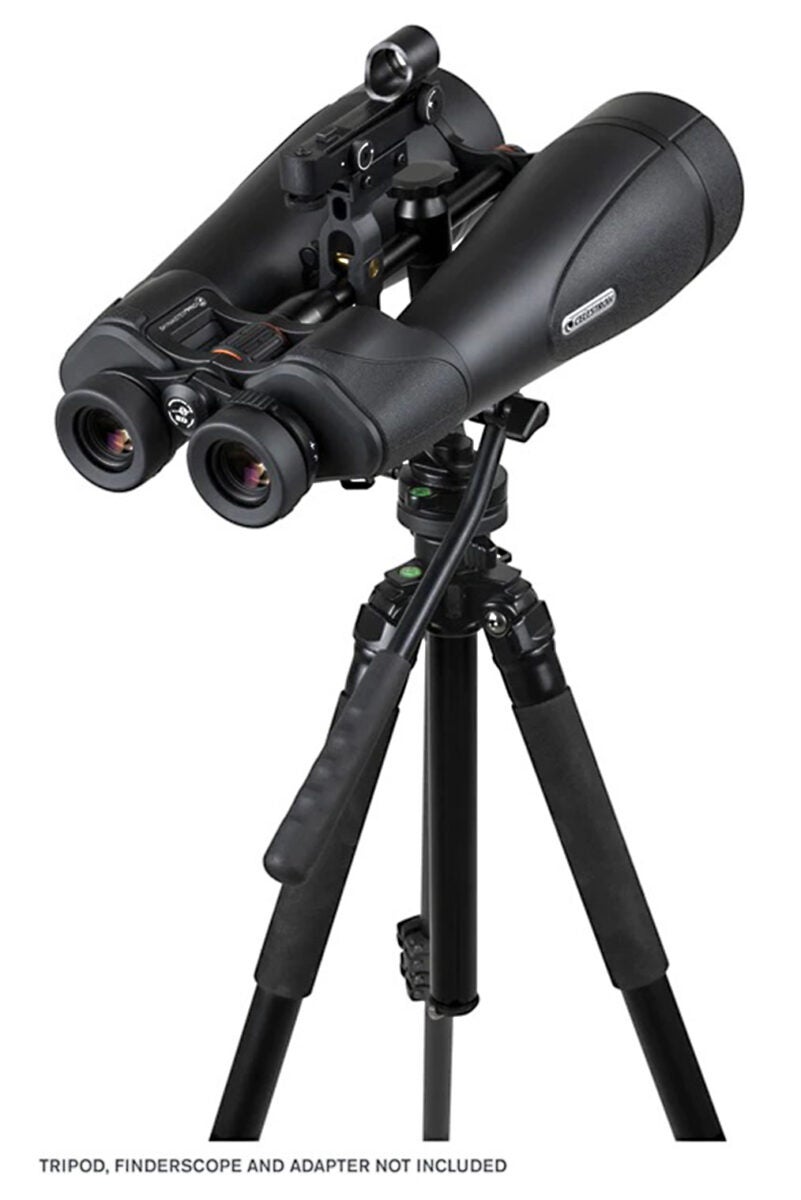
The inside of the binoculars is a testament to proper engineering. The company uses Porro prisms (a pair of right-angled prisms that allows the optical path to be folded) because they can be widely spaced, creating a better 3D view. The prisms are made from high-density BaK-4 glass, generally considered to have better optical properties than the other choice for prisms BK-7 glass.
The 80mm objective lenses are each essentially a 3.15-inch telescope. All the glass surfaces (objectives, eyepieces, and prisms) are fully multicoated with Celestron’s proprietary XLT coating technology. This boosts light transmission and reduces reflectivity throughout the system. Finally, the interior is filled with nitrogen, an inert gas that will not promote any type of degradation. It also prevents fogging if you move the binoculars from a warm to a cold environment.
Putting them to the test
Before using the binoculars at night, I spent a few hours in the day scanning the mountain ranges to my north and east. The Skymaster Pro ED binoculars provided views of ridges and clefts that were impressive from a virtual distance 20 times closer than I really was. And there’s no finer treat than viewing the majesty of a Harris’s hawk or a great horned owl at that magnification.
Of course, our focus is on the sky. The first astronomical object I looked at was the Orion Nebula (M42). Just as I had expected, the nebula was colorless, but the overlapping parts of the nebulosity were quite apparent. I then moved on to the Trapezium Cluster, visible as four distinct stars during moments of good seeing — Orion was sinking into the western horizon at the time.
Next up was a sweet pair of globular clusters, M3 in Canes Venatici and M5 in Serpens. Each appeared as a soft ball of light against a black velvet background, notwithstanding the few foreground stars. When both clusters reached a higher altitude, I could make out a few faint points of light at their extremities. At a limited magnification of 20x, the vast bulk of their stars remained unresolved.
Later in the evening, the constellation Lyra had climbed to an altitude where I wondered if I could spot the Ring Nebula (M57). And, indeed, there it was, a distinct disk of pale light. Finally, I took my time admiring the satisfying view of one of my favorite deep-sky objects, the Wild Duck Cluster (M11) lying in the Scutum Star Cloud. With its 3.4° field of view, the Pro ED binoculars framed this area well, expanding the nearly ¼°-wide cluster as well as a large number of foreground stars.
The bottom line
With a retail price of $429.95, and considering all that the unit offers, Celestron’s SkyMaster Pro ED 20x80mm Porro binoculars are a real deal. If you (or, more specifically, your tripod) can handle binoculars that weigh nearly 8 pounds (3.6 kg), get ready for some amazing daytime and nighttime views for many years to come.

